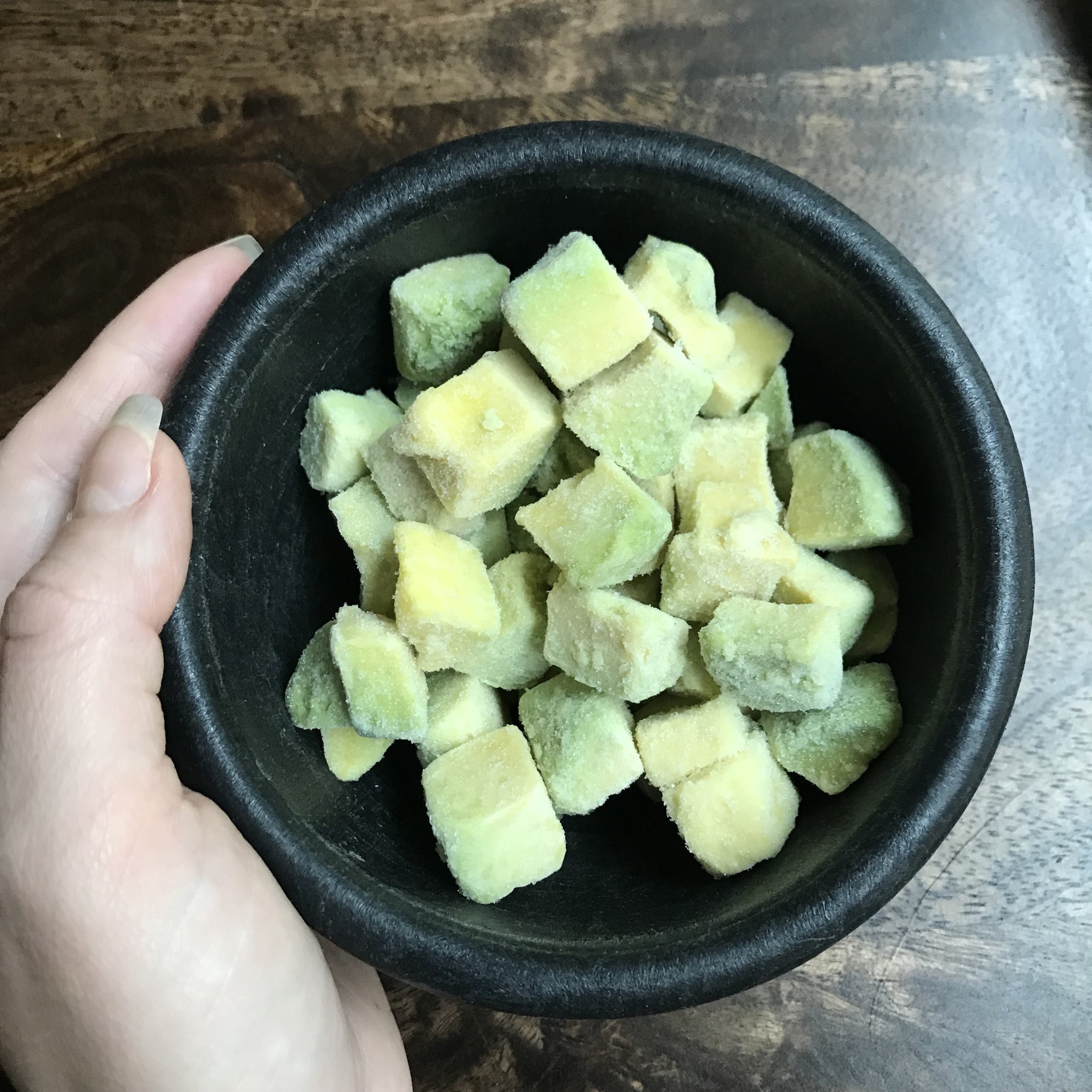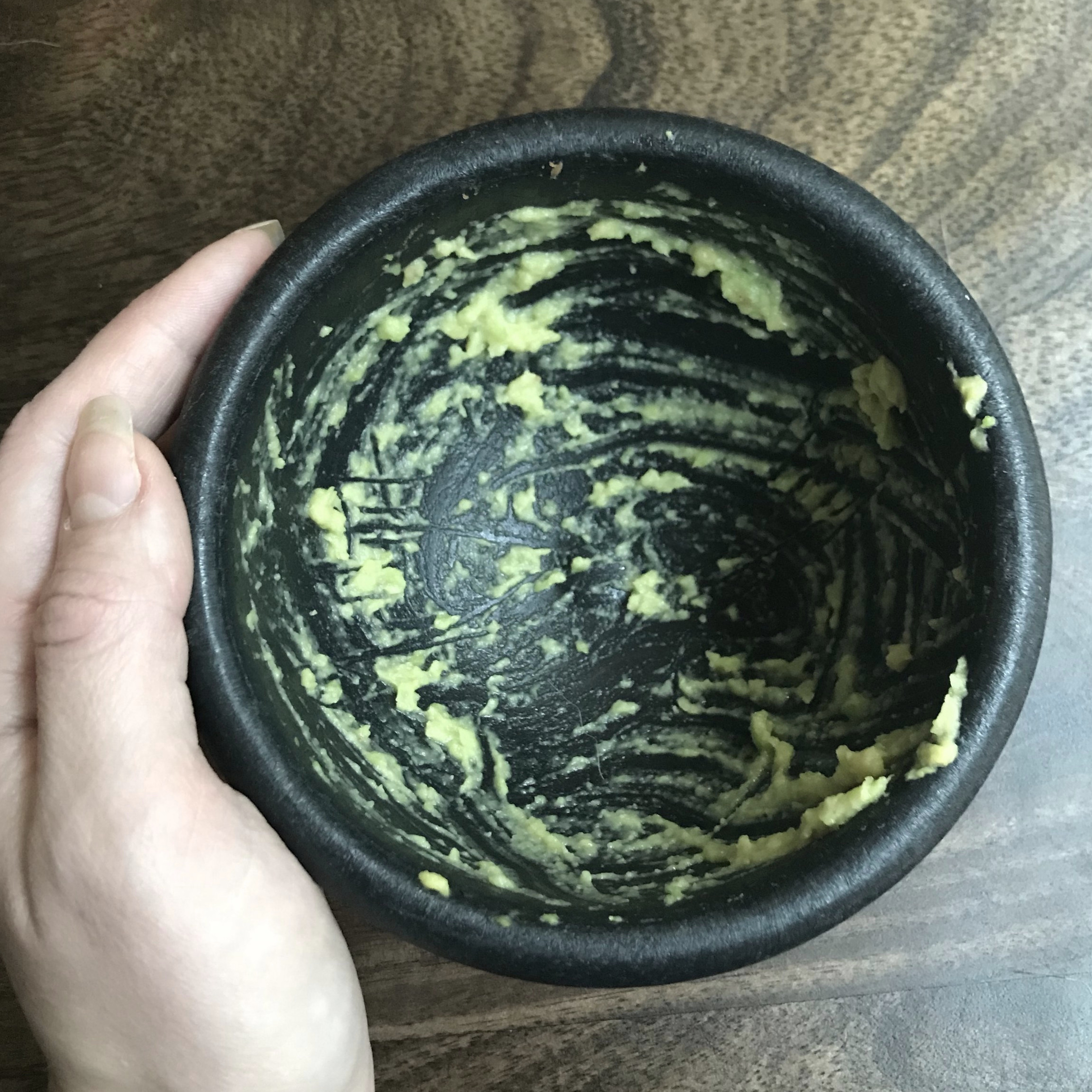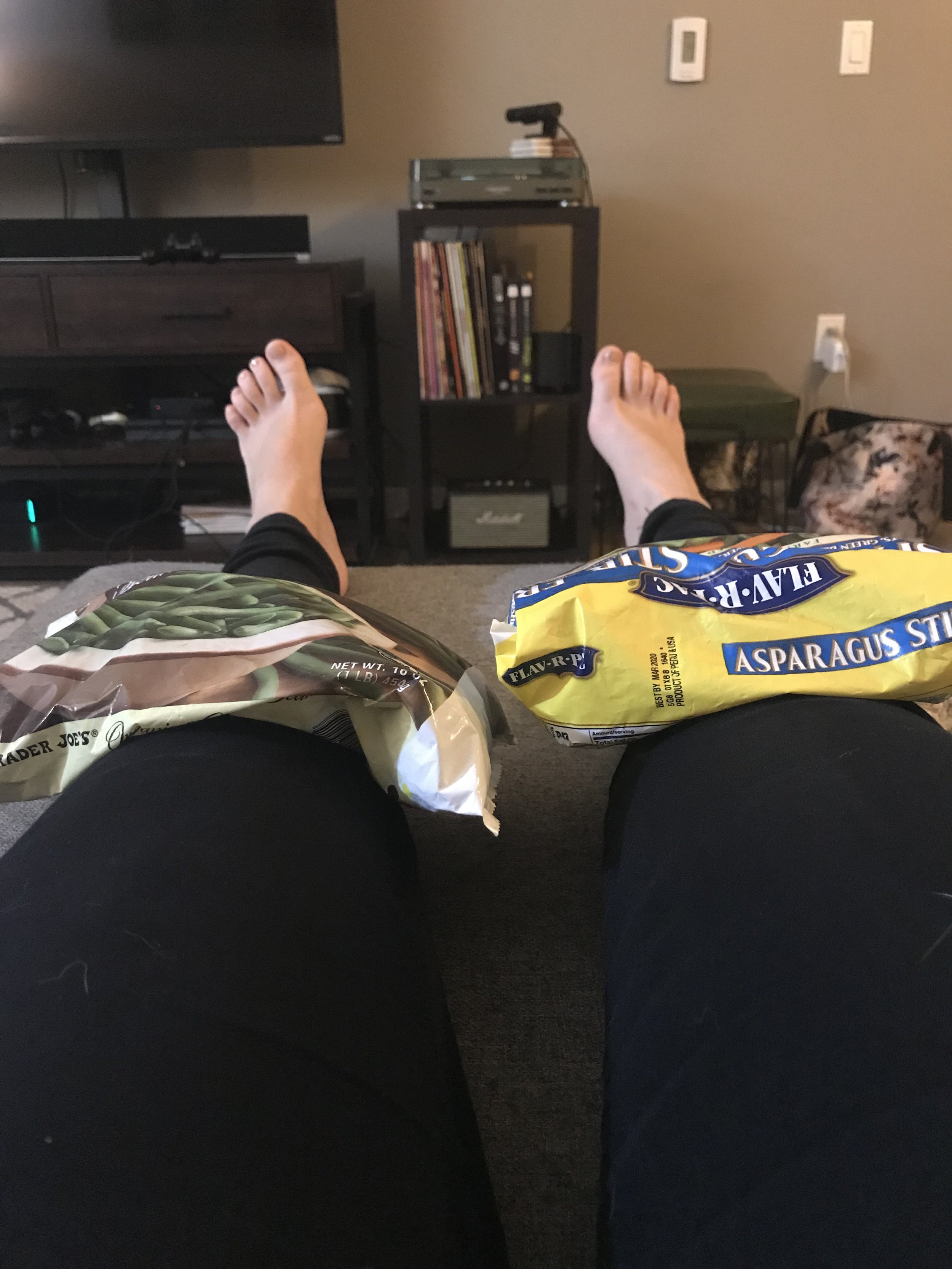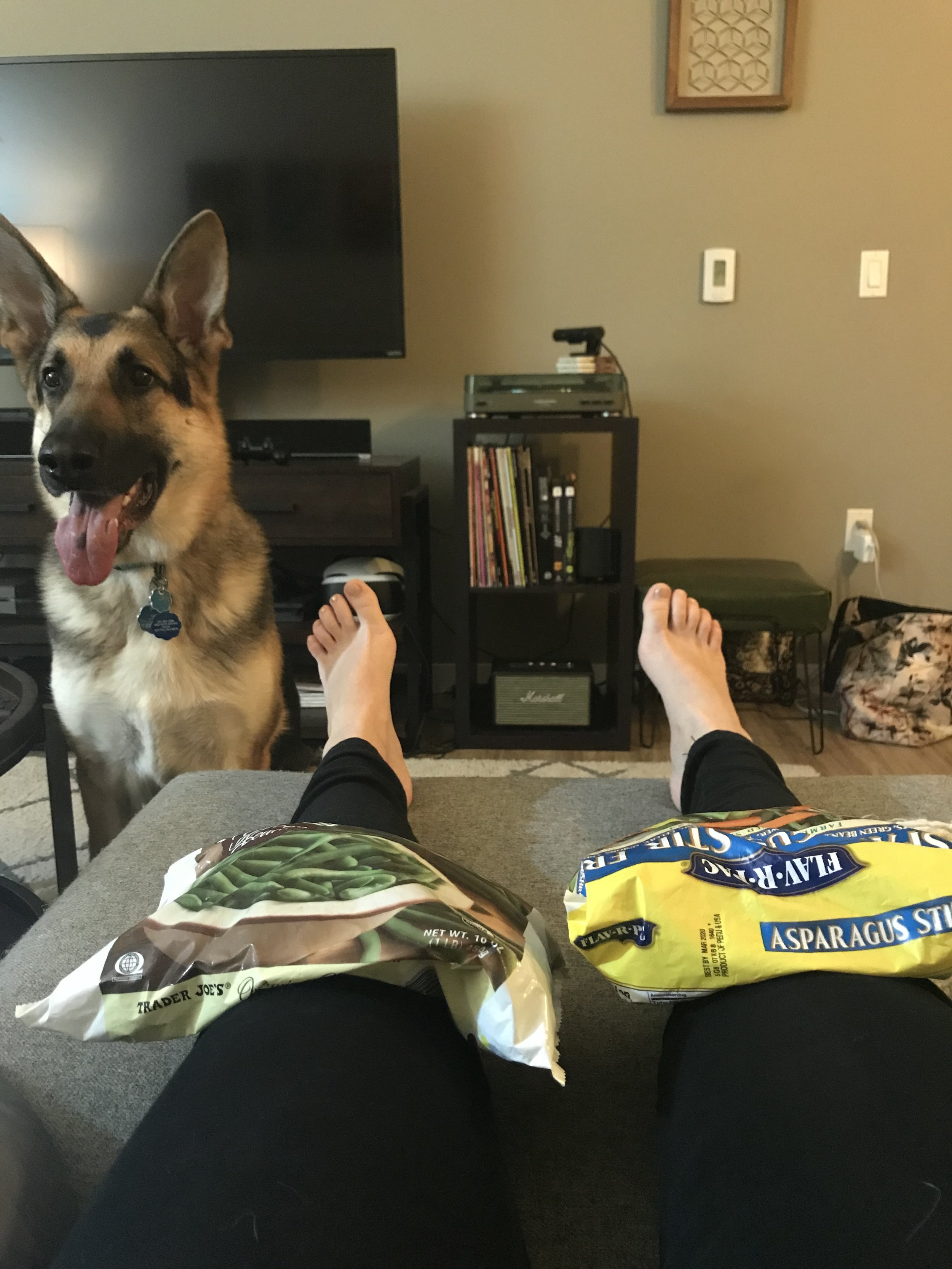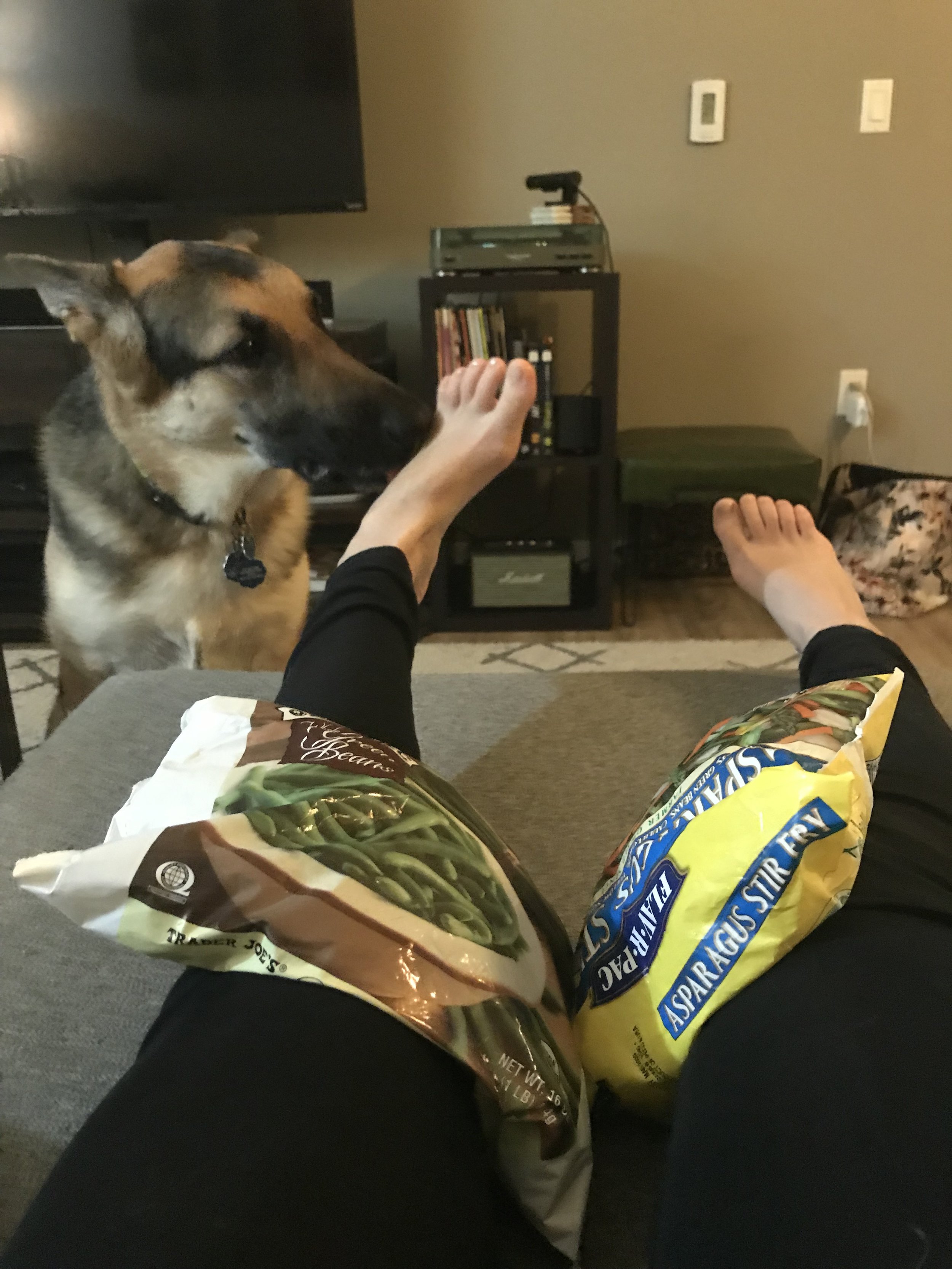Are Frozen Foods as Healthy as Fresh?
Is frozen food healthy? Is it as nutritious as fresh?
Many Americans shy away from frozen foods because they are worried about 3 things:
1. They think frozen foods are not as nutritious as fresh
2. They expect frozen foods to have more sodium or preservatives
3. They don’t think frozen foods will taste as good as fresh
These are all common misconceptions about frozen foods. Unfortunately, these can lead people to have fewer produce options available- especially in the winter. As summer turns to fall and fall to winter, the options at the store dwindle, and those that are available decrease in quality. The price of produce also rises due to the increased travel time in the winter. These challenges can lead individuals to purchase fewer fruits and vegetables or become bored or dissatisfied with the limited options or decreased quality. Therefore, it is more difficult for people to reach their daily fruit and vegetable goals. How can you maintain your fruit and vegetable intake throughout the winter? Are frozen fruits and vegetables or frozen meals healthy options? Let’s bust a few frozen food myths:
Frozen food IS just as nutritious as fresh!
A 2015 study examined the nutrition content of eight fruits and vegetables: corn, carrots, broccoli, spinach, peas, green beans, strawberries, and blueberries. The mineral and fiber content between the fresh and frozen foods showed no significant difference. Another study found similar results in the same fruits and vegetables, this time looking at vitamins. Each of the frozen foods maintained comparable levels of vitamins to their fresh counterparts, and a few were even better! Although beta carotene deteriorated more in some of the frozen items, Vitamin C was retained better in several of the frozen foods than in the fresh.
Frozen food doesn’t always have too much salt- or other preservatives added.
I used to write off frozen foods completely. I had no confidence that the food industry could create a frozen meal that wasn’t sky high in sodium, off the charts in fat and calories, and was still filling and very importantly, tasted good. While many pre-made frozen meals can be extremely high in sodium, fat, and calories, there are now many healthier options available on the market. Compare a Marie Callender’s Italiano Lasagna at 390 calories, 15g fat, and a whopping 1150mg sodium to Luvo’s new Kale Ricotta Ravioli with 230 calories, 7g fat, and just 310mg sodium. I’d still recommend preparing most of your food yourself, but these types of meals can offer a nutritious and well deserved break from cooking in a balanced diet!
Additionally, frozen produce can be a healthy, convenient way to keep fruits and vegetables on the menu during the winter months. As we just learned, frozen produce retains just as much nutrition and sometimes even more than fresh- especially if the fresh produce has traveled for weeks to reach you. Frozen produce also offers a convenience factor. In many cases the produce is already washed and chopped, making meal time quicker and easier on busy days. There are plenty of plain frozen vegetable options that can be quickly seasoned and cooked to perfection.
Check out my review of Luvo’s Great Karma Coconut Curry Bowl here!
Frozen food CAN taste good- when it is done right!
Frozen vegetables prepared the wrong way can taste just as bad as boiled Brussels sprouts. Lucky for you, I have tried just about every frozen vegetable out there, and I’m happy to share what works and what doesn’t to help you avoid suffering through a plate of mushy vegetables. First, here are a few frozen vegetables that haven’t worked out so well:
Brussels sprouts- when prepared from frozen, these little guys turn straight to mush. Brussels spouts already get a bad rap, so go the extra mile to give them the chance they deserve. I promise they can be delicious! Get them fresh and sauté or roast with garlic or a drizzle of maple syrup instead of trying them from frozen.
Zoodles- with their high water content, these noodle alternatives fell apart when heated. Instead of frozen, you can purchase these in many grocery stores fresh and pre-cut in the salad section. There are also several spiral vegetable slicers available so you can create your own zoodles at home.
Cauliflower “mashed potatoes”- with the Keto diet all the rage these days, riced cauliflower, cauliflower mashed potatoes, and even cauliflower pizza crusts have become increasingly popular. In my experience, the frozen versions of cauliflower mashed potatoes and riced cauliflower haven’t held up as well or tasted as good as those prepared from fresh.
A few tips for choosing the best frozen produce:
Choose items that don’t have sauces, salt, or sugar added. These can add up the sodium, calories, and fat that traditionally give frozen foods a bad name. Instead, season the food yourself when you cook it. Some of my favorite flavorings to keep on hand include: minced (and powdered) garlic, minced ginger, low sodium soy sauce, an Italian spice blend, chili sauce, and a pepper mill.
Produce that is firmer to begin with holds up better when cooked from frozen than produce that is soft. For example, broccoli will maintain its texture better than bell peppers. Choose firmer vegetables for dishes that you want to have more of a crisp-tender consistency.
Feel the bag, just like you would feel fresh produce to check for ripeness. If the food is stuck together in one clump, it means it wasn’t frozen correctly to begin with or it has thawed and refroze in the process of transportation. You should be able to feel individual pieces in the package.
Finally, you have made the decision to venture into the world of frozen foods. Whether to save time or money, to add variety to your diet in the off season, or just to try something new, you have made an excellent choice! What will you choose from the case? What will you use it for? Here are a few ways that I enjoy frozen foods:
Stir Fry Vegetables- pair these with a frozen pre-cooked grain, frozen edamame, and a homemade sauce from the low sodium soy sauce, garlic, and ginger I mentioned earlier for a quick and easy Meatless Monday meal.
Bell Peppers and Onions- I keep these on hand all the time, because I can easily create many dishes with them. For example,
Veggie omelet or frittata- Sauté them in a pan before adding eggs
Spaghetti- Cook in a shallow saucepan to add vegetables to your pasta sauce
Mexican- stir fry and flavor with fajita seasoning to add to tacos, burritos, or quesadillas
Indian- cook with spices, tomatoes, and lite coconut milk for a veggie filled masala sauce
Spinach- add to smoothies, sauces, or soups to sneak some greens it. Honestly, once blended, you can’t taste it, and if your family members are worried about the green specks in the tomato sauce, just tell them it is parsley or basil.
Green Beans- sauté with garlic, olive oil (or butter alternative), slivered almonds, and a dash of lemon juice for a healthier Green Beans Amandine. This is the ultimate never-go-without-vegetables option. Keep frozen green beans on hand to avoid a no-vegetable dinner.
Berries- purchasing frozen is a cost effective way to keep these antioxidant powerhouses in your diet year round without breaking the bank. They are great additions to:
Smoothies
Oatmeal
Yogurt
Pancakes or Waffles- microwave for a few minutes to create a berry compote
Desserts (pies and crumbles are great a great way to get fruit into dessert!)
Avocado- this is absolutely my new favorite thing! Check out my full review and find out where to find them here. Frozen avocado is great for guacamole, sandwich spreads, or smoothies! Defrost and mash with garlic powder, lime juice, and salt for a simple healthy dip. I used this to top my 20 Minute Tostada for one (recipe coming soon!)
So there you have it! You now know that frozen foods can be just as healthy as fresh, they aren’t always loaded with salt or preservatives, and they CAN taste good. You know which ones to avoid and which ones work best, so you can now prepare frozen foods with confidence. Let me know in the comments below which ones you decide to try!
Frozen vegetables also make good ice packs… until your dog decides to lick your feet!
Berry photo courtesy of: fireskystudios.com


